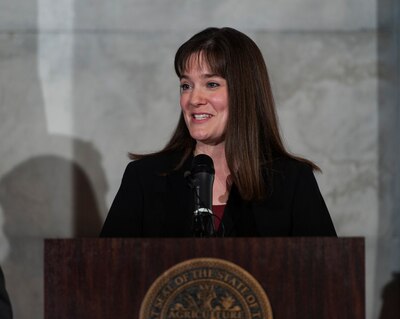For five years, the Achievement School District has been the Tennessee Department of Education’s primary vehicle of school turnaround.
But that’s changing, bringing a dramatic era in Tennessee school reform to an end.
The state-run district hatched in the Race to the Top era when Tennessee won a $500 million pot of federal funds in 2010 by promising in part to improve its most struggling schools. To fulfill that promise, officials developed the Achievement School District, which takes over schools with the worst test scores and assigns them to new managers, usually charter operators, with the goal of vaulting them to the top within five years. By last fall, the district’s portfolio had swelled to 33 schools, mostly in Memphis.
But the model has achieved mixed results at best, while angering local stakeholders with each school takeover. Now, in the year that ASD founders set as a benchmark, a series of changes have whittled away the district’s influence.
Education Commissioner Candice McQueen says the state will no longer default to the Achievement School District when considering how to help Tennessee’s lowest-performing schools.
“We’re in a dynamic environment. We’re learning about what works,” she said.
A new federal education law offered an opportunity to revamp school improvement strategies under McQueen, who became commissioner about three years after the ASD took control of its first schools.

In Tennessee’s plan under the Every Student Succeeds Act, the State Department of Education clipped the ASD’s wings with new policies approved this spring by the legislature. They address longstanding concerns, including complaints that the state district had moved beyond its original purpose, lacked a clear exit strategy, and didn’t give local districts enough time to execute their own turnaround plans.
McQueen also announced plans to downsize the ASD’s structure this summer by slashing its team and merging several ASD-related offices in Memphis.
Tennessee’s pivot comes as other states acknowledge the limits of state-run turnaround districts. Michigan and Louisiana both began dissolving similar districts this year, even as Nevada and North Carolina have moved to create new ones.
“The fact that they seem to be rolling back (the ASD) in Tennessee, I think is a good sign. Hopefully these states will turn to strategies that are research-based, that actually improves what goes on in classrooms,” said Leigh Dingerson, an education consultant who has researched the model for the Southern Education Foundation and Brown University’s Annenberg Institute for School Reform.
Tennessee’s new strategy doesn’t completely throw out the ASD. McQueen emphasizes that the district will remain the state’s most rigorous intervention. But with a long list of other schools in need of transformation, Tennessee will lean on more local district-led turnaround initiatives. A prime example is Shelby County Schools’ celebrated Innovation Zone in Memphis, which gives schools more autonomy over aspects like school day length and hiring, without converting them to charter schools.
Gov. Haslam says he’s committed to the ASD, even as the state downsizes its office
Tennessee also wants to launch a “partnership zone” model, in which a team of state and local district leaders will work together to oversee a cluster of five or more priority schools. That tool is being explored for five Chattanooga schools beginning in 2018.
McQueen says the state also won’t shy away from closing schools that are eligible for ASD takeover, but serve too few students. Enrollment has been a big challenge in Memphis, where the state-run district closed two of its charter schools last month after two operators determined that they didn’t have enough students to provide the necessary supports.

“We have to think not only about what’s appropriate academically, but also do you have the financial ability for that particular plan to be successful based on enrollment or the potential for declining enrollment?” McQueen said. “Those are very particular characteristics we’ll have to think about as we discuss interventions.”
McQueen views all the changes as complementing the ASD’s work, not stymying it. “It gives us more opportunity for intervention in more ways that fits the needs of the schools and of the district,” she said.
The move to spread funding and resources across different turnaround techniques makes sense, says Ashley Jochim, a researcher with the Center on Reinventing Public Education.
“It becomes very difficult to put all of your eggs in the turnaround district basket,” said Jochim, who has looked at state turnaround initiatives across the nation. “The reality is there are too many schools that need help for that option.”

